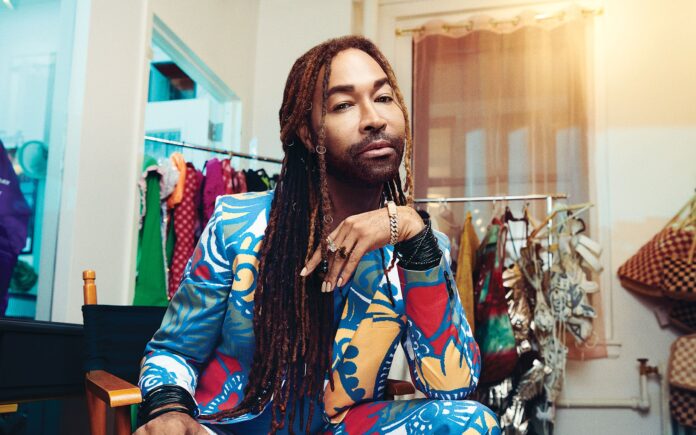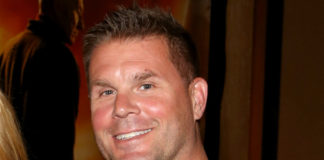
When Ty Hunter met Barack Obama, in 2012, the president had a question for Beyoncé’s stylist: “Where do you go from there?” A decade later, the fifty-year-old Texan, who spent fifteen years dressing the singer before moving on to work with Billy Porter and other celebrities, has become a star in his own right, with more than 420,000 Instagram followers. This fall, he’s publishing his memoir, a collaboration with fashion journalist Eila Mell. “She asked me about my story, and she said, ‘This is like a movie,’ ” he says. Makeover From Within: Lessons in Hardship, Acceptance, and Self-Discovery (Chronicle Books, November 15) features a foreword from Beyoncé. The book follows Hunter’s life, from growing up in Austin and surviving a gunshot wound in his twenties to selling clothes at Houston’s Galleria, where he met Tina Knowles—who would eventually ask him to help style her daughter’s group, Destiny’s Child.
Texas Monthly: Why did you decide to do a memoir?
Ty Hunter: I’ve always wanted to write a book. People wanted me to do a fashion book, but if you looked at my social media and didn’t know me, you wouldn’t know I was in fashion. I’m much more about energy and the people.
TM: Yes—you’re known on Instagram for your inspirational quotes and happy memes. You call them “Ty’s Yellow Pages,” for the color you often use in those posts. How did that evolve?
TH: Well, I started putting up quotes for me, for what I was going through; then I would travel, and people would say, “You posted something the other day that really helped me get through this.” I can post pictures of fashion forever, but what am I doing to really make a change in this world? Post fashion, and they’d be like, “That was hot.” To actually see that I helped someone through a divorce, that was bigger. Social media is a gift and a curse. It’s a dark place sometimes, and I just want people to know that mine is a place to go to get out of the funk of it all.
TM: Fans follow you for the fashion too, though. When did you realize you were good at it?
TH: I always loved fashion. I was “best dressed” in high school. I loved thrifting and vintage shopping with my grandmother and my great-grandmother. My mom’s a single parent—her funds weren’t all that. During that time, if you wore Goodwill, you got teased. But I knew that I had a fashion sense because I could wear these things and remix them and make them my own and not get teased. I knew I had some kind of flair. I’ve always loved being different.
“My foundation is these beautiful women who really allowed me to be myself and who taught me right and wrong.”
TM: But you didn’t start out in fashion. Your first job after college
was making heart valves for a medical supply company in Austin. How on earth did you get from that line of work to designing looks for Destiny’s Child? It started when you moved to Houston, in your twenties, right?
TH: My first job in Houston, believe it or not, was at the T. J. Maxx on Richmond. They let me start doing visual displays. Eventually I started working at a store called Bebe, in the Galleria. I was so real with everyone. I’d be like, “That looks a fool. Let me go back and find you something else.” Women knew that I wasn’t just looking at them as a commission. I ended up meeting Miss Tina, Beyoncé’s mom, at the Galleria, and we just built a relationship. Later she came into Bebe with the girls and was like, “I’m going to get you out of here one day.” I didn’t believe her, but then I had a day off and called her, and the rest is history. I immediately started working on the “Survivor” video and the Grammy Awards.
TM: I love that scene with Miss Tina, especially because it takes place in a Bebe. I was in high school during those years, and Bebe was the store.
TH: I felt like a superstar when I worked there! I would go to the club, and they’d be like, “We got Ty Hunter from Bebe in the place.”
TM: You stopped working with Beyoncé full-time in 2014 because you believed that it was time to try other things. Do any outfits stand out as favorites from your many years working for her?
TH: I always say Beyoncé’s album cover with the crystal top [2003’s Dangerously in Love] and the “Crazy in Love” video. That’s still one of my favorites because it’s so timeless and beautiful. We started so simple, with just a white tank and jean shorts and red pumps, and it escalated to her wearing a Versace dress.
TM: You focus the first chapter of your book on the women who raised you, particularly your mother, grandmother, and great-grandmother. How did you decide to give them such front-and-center placement?
TH: My foundation is these beautiful women who really allowed me to be myself and who taught me right and wrong. I wouldn’t do certain things because I would just picture hurting one of them. I’m such a mama’s boy. She’s still in Austin, and I spend a lot of time with her. My great-grandmother was so funny, and my grandmother was the foundation of the family. To lose them was very, very hard, but I’m still close to them. Even before I do interviews like this, I “talk” to my grandmother to give me the right things to say.
TM: You were raised in the church, and you credit a higher power for saving your life after you were shot outside a party in Austin when you were twenty. But the church also gave you conflicting messages about being gay, and that caused a lot of pain. Do you still consider yourself religious?
TH: I wouldn’t be here if it weren’t for God. I’m very in tune with higher powers and prayer and meditation. I pray every day. I allow the energies to move me, and there are a lot of battles I don’t fight anymore. People ask, “How do you stay young?” I just stay in my own lane, and my lane is the zen lane.
This interview has been edited for clarity and length.
This article originally appeared in the November 2022 issue of Texas Monthly with the headline “Beyoncé and Beyond.” Subscribe today.







